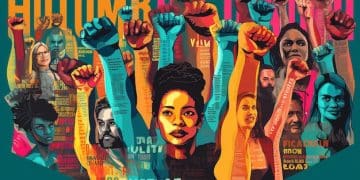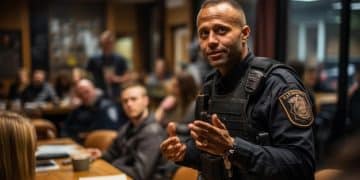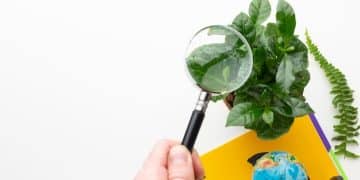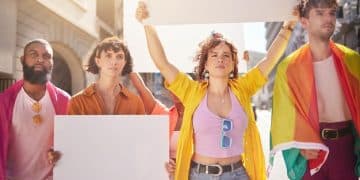AI Art Ethics: Copyright, Creativity, Cultural Impact Explored
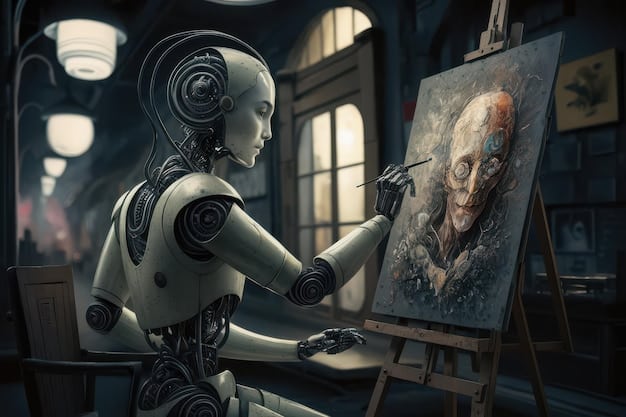
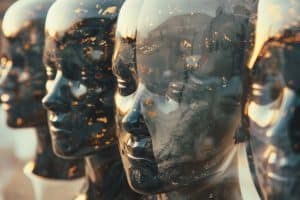
The rise of artificial intelligence in creative industries has sparked intense debate around AI Art Ethics. Can machines truly create art, or are they simply remixing human creativity?
These questions reach beyond technology, touching on copyright law, artistic identity, and cultural values. For artists, audiences, and policymakers, this conversation isn’t abstract, it’s reshaping the future of how we define and experience art.
The Dawn of AI Art: A New Creative Paradigm
The advent of artificial intelligence as a creative force marks a pivotal moment in human history, challenging our long-held perceptions of artistry and authorship.
This technology, once confined to the realms of science fiction, now actively participates in the creation of visual, auditory, and even literary works, blurring the lines between human design and algorithmic generation.
Understanding this paradigm shift requires an exploration of how AI systems learn, synthesize, and ultimately produce what we categorize as art.
How AI Learns and Creates Visuals
AI art generators operate on sophisticated algorithms trained on vast datasets of existing artworks. These systems analyze patterns, styles, colors, and compositions, developing an intricate understanding of aesthetic principles.
When prompted, they then generate new images by combining these learned elements in novel ways, often leading to results that are remarkably original and unexpected.
This process, while seemingly magical, is a complex interplay of mathematical models and statistical probabilities.
- Generative Adversarial Networks (GANs): Two neural networks, a generator and a discriminator, compete. The generator creates images, and the discriminator tries to identify if they are real or fake, iteratively improving the generator’s output.
- Diffusion Models: These models progressively add noise to an image and then learn to reverse the process, starting from pure noise and gradually refining it into a clear image based on a text prompt.
- Neural Style Transfer: An algorithm applies the artistic style of one image onto the content of another, effectively blending two distinct visual characteristics.
Defining Human vs. Machine Creativity
The question of whether AI can be truly “creative” remains a contentious philosophical and artistic debate. Traditional creativity is often linked to human consciousness, intent, and emotional expression.
AI, on the other hand, operates based on algorithms and data. Yet, the outputs can evoke emotions, inspire thought, and display an aesthetic quality that rivals human creations.
This prompts a reevaluation of creativity itself: Is it solely about conscious intent, or can it also emerge from complex computational processes?
The nuances of this argument are critical for understanding how we value and categorize AI-generated works.
As AI systems become more sophisticated, their ability to produce unique and compelling visuals continues to challenge our preconceived notions of what constitutes art.
The emergence of AI in the artistic domain is not merely a technological curiosity; it is a profound cultural development that demands rigorous examination.
Its influence extends beyond aesthetics, touching upon fundamental aspects of authorship, value, and societal interaction with art.
Copyright Conundrums: Who Owns AI Art?
The issue of copyright in AI-generated art is perhaps the most immediate and legally contentious ethical challenge facing creators and legal professionals alike.
Traditional copyright law is predicated on the idea of human authorship and originality. However, when an AI system, rather than a human, generates an artwork, the application of existing legal frameworks becomes incredibly complex.
This ambiguity creates a legal vacuum that could have far-reaching implications for artists, developers, and intellectual property rights globally.
The Challenge of Human Authorship
Copyright law typically requires a human author.
The U.S. Copyright Office, for example, has explicitly stated that it “will not register works produced by a machine or mere mechanical process that operates without any creative input or intervention from a human author.”
This stance immediately raises a critical question: What constitutes “creative input or intervention” in the context of AI art? Is guiding a large language model with detailed prompts enough?
What if the AI generates something entirely unforeseen by the human operator?
- Prompt Engineering: If the human provides highly specific textual or visual prompts that dictate the outcome, is that sufficient for authorship?
- Algorithmic Autonomy: When AI models are designed to generate novel images without direct human guidance on individual pieces, does the developer retain copyright, or is the output uncopyrightable?
- Originality Threshold: Does an AI output, derived from a vast dataset of existing works, meet the “originality” threshold required for copyright protection?
Training Data and Derivative Works
Another significant copyright hurdle involves the training data used by AI models.
Many AI art generators are trained on enormous datasets that include millions of copyrighted images, often without the explicit permission or compensation of the original artists.
This raises questions of whether the AI’s output constitutes a derivative work and if the use of copyrighted material in training could be considered copyright infringement.
Legal systems worldwide are grappling with whether the act of ‘training’ constitutes fair use or an infringing copy.
The legal precedents being set now will shape the future of digital art and intellectual property.
Solutions could involve new forms of licensing, collective management organizations for AI-generated content, or even entirely new legal definitions of authorship that account for hybrid human-AI collaboration.
Without clear guidelines, artists whose work is used in training data face potential exploitation, while AI developers face legal uncertainty. This complex interplay of technology and law demands a nuanced and forward-thinking approach.
The Concept of Creativity in the Age of AI
The philosophical and practical implications of AI on creativity extend far beyond copyright. It challenges our very understanding of what it means to be creative and how we value human artistic endeavor.
For centuries, creativity has been seen as an inherently human trait, linked to consciousness, emotion, and unique personal experience.
AI, operating on algorithms and statistical models, forces a profound re-evaluation of these traditional notions, generating both excitement and apprehension among artists and cultural commentators.
Challenging the Human Monopoly on Artistry
The advent of AI art compels us to confront whether creativity is exclusively a human domain. If a machine can generate aesthetically pleasing, emotionally resonant, or conceptually challenging works, does that diminish the human achievement?
Or does it merely expand our definition of where artistic output can originate? Some argue that true creativity involves intent, narrative, and lived experience that AI, by its nature, cannot possess.
Others contend that the output itself, regardless of its source, holds intrinsic artistic value. This debate is fundamental to how we frame the future of art.
The impact of AI on human creativity can be viewed from several perspectives:
- Tool for Human Artists: AI can serve as a powerful tool, accelerating workflows, generating ideas, or assisting with complex technical tasks, allowing human artists to push creative boundaries further.
- Competition and Devaluation: Concerns exist that a flood of easily generated AI art could devalue human artistry, making it harder for human artists to earn a living or for their unique contributions to stand out.
- Redefining Artistic Skill: The emphasis might shift from technical execution (which AI can often replicate or surpass) to conceptualization, curation, and the unique human touch in guiding AI tools.
The Evolution of Artistic Skills and Value
As AI becomes more sophisticated, the skills valued in artists may evolve.
Instead of mastery of traditional mediums, the future artist might be a “prompt engineer,” a curator of AI outputs, or a hybrid creator who seamlessly integrates AI tools into their unique artistic vision.
The value proposition of human art could increasingly lie not just in the final product but in the unique human narrative, the emotional connection, or the conceptual depth that can only come from human experience.
This shift isn’t unprecedented; photography didn’t replace painting, but it did force painting to evolve. Similarly, AI art may not replace human art but rather redefine its boundaries and purpose.
The conversation around creativity in the age of AI is dynamic, reflecting deeper anxieties and aspirations about human identity in a technologically advanced world.
Cultural Impact: Accessibility, Authenticity, and Bias
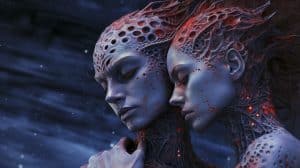
The widespread adoption of AI in art generation has profound cultural implications, affecting not only how art is created but also how it is consumed, valued, and understood within society.
These impacts range from democratizing access to creative tools to raising concerns about authenticity, cultural appropriation, and inherent biases embedded within the algorithms.
Addressing these facets is crucial for navigating the responsible integration of AI into our cultural fabric.
Democratizing Creativity vs. Diluting Value
One of the most touted benefits of AI art tools is their potential to democratize creativity. Individuals without traditional artistic training or access to expensive materials can now generate sophisticated imagery with relative ease.
This accessibility could foster new forms of expression and broaden participation in artistic processes. However, this ease of creation also raises concerns about the potential flood of AI-generated content diluting the perceived value of art.
The ubiquity of AI-generated images might lead to:
- Artistic Saturation: A vast increase in the sheer volume of “art,” making it harder for genuinely groundbreaking human works to gain recognition.
- Reduced Appreciation: A diminished appreciation for the skill, training, and effort involved in traditional art forms.
- New Avenues for Expression: The opportunity for diverse voices to express themselves visually, overcoming barriers of skill or resources.
Authenticity, Attribution, and Cultural Appropriation
The question of authenticity becomes paramount when discussing AI art. If an artwork is generated by AI, is it truly “authentic” in the same way a hand-painted canvas is?
Furthermore, problems of attribution arise: should AI-generated works be clearly labeled as such? Without proper disclosure, the public might be misled about the true origin of a piece.
More critically, AI, trained on vast datasets, can inadvertently (or purposefully) replicate styles, motifs, or imagery from specific cultures.
If not handled with extreme care and sensitivity, this can lead to new forms of cultural appropriation, where AI reproduces or reinterprets cultural heritage without proper acknowledgment, understanding, or respect for its original context and creators.
Bias in Algorithms and Representation
AI models are only as unbiased as the data they are trained on. If historical datasets disproportionately feature certain demographics, styles, or perspectives, the AI will inevitably learn and perpetuate those biases.
This could lead to a lack of diversity in AI-generated art, reinforcing existing stereotypes or marginalizing underrepresented groups.
The ethical imperative here is to actively curate and diversify training datasets and to develop algorithms that are designed to mitigate bias, ensuring that AI art contributes to a more inclusive and representative visual culture rather than mirroring societal inequities.
These cultural impacts underscore the need for responsible development and deployment of AI art technologies, fostering genuine creativity while upholding ethical considerations.
The Role of Human Oversight and Collaboration
While AI’s capabilities as an art generator are undeniably impressive, the ethical framework surrounding its use increasingly points towards the imperative of human oversight and collaboration.
The notion that AI operates entirely autonomously, creating in a vacuum, is a mischaracterization that overlooks the crucial human roles in its development, training, prompting, and curation.
A collaborative model, where AI functions as an advanced tool rather than an independent artist, appears to be the most viable path forward for responsible innovation.
Guiding the AI: Prompt Engineering and Curation
Human input is essential at various stages of AI art creation. The process often begins with “prompt engineering,” where humans meticulously craft textual or visual instructions to guide the AI towards a desired outcome.
This requires a unique blend of technical understanding and artistic vision. Furthermore, once an AI generates numerous outputs, human curators step in to select, refine, and interpret the results.
This curation process is itself an act of creative decision-making, transforming raw AI output into a meaningful artistic statement. The human’s ability to discern, adjust, and provide context remains irreplaceable.
The Human-AI Partnership: Augmenting Creativity
Instead of viewing AI as a replacement for human artists, a more productive perspective positions it as a powerful collaborator. AI can augment human creativity by:
- Generating Ideas: Providing a rapid stream of novel concepts or variations that a human might not conceive of independently.
- Automating Repetitive Tasks: Freeing artists from labor-intensive aspects of their work, allowing them to focus on conceptualization and refinement.
- Exploring New Styles: Experimenting with artistic styles or combinations that might be difficult for a human to execute or imagine.
This partnership suggests a future where artists are not just wielders of brushes or chisels, but also skillful orchestrators of sophisticated algorithms.
The value shifts from purely manual execution to the ingenuity in defining, guiding, and refining the AI’s creative process.
Ethical Responsibility in Development and Deployment
The developers of AI art tools bear a significant ethical responsibility.
This includes consciously working to mitigate biases in training data, ensuring transparency about the AI’s capabilities and limitations, and considering the societal impact of their creations.
Moreover, frameworks for responsible deployment are crucial.
This might involve clear labeling mechanisms for AI-generated content, consent mechanisms for artists whose work is used in training data, and ongoing dialogue within the artistic and legal communities to adapt to new challenges.
Human oversight is not just about making better art; it’s about ensuring that the development and deployment of AI art are fair, equitable, and culturally enriching.
Future Trajectories: Regulation, Innovation, and Evolution
The landscape of AI-generated art is dynamic, constantly evolving with technological advancements and societal responses.
As we move forward, several key trajectories emerge concerning regulation, continued innovation, and the ongoing evolution of art itself.
Understanding these potential paths is crucial for artists, developers, policymakers, and the public to navigate this nascent field responsibly and effectively.
The Imperative for Adaptive Regulation
The current legal frameworks, largely developed before the advent of sophisticated AI, are struggling to keep pace with the rapid advancements in AI art. This necessitates the development of adaptive and forward-thinking regulations.
These might include:
- Clear Copyright Guidelines: Establishing international standards for AI authorship, derivative works, and the use of copyrighted material in training datasets.
- Transparency and Disclosure: Mandating the labeling of AI-generated content to ensure authenticity and prevent misrepresentation.
- Ethical AI Principles: Developing regulatory bodies or industry standards that guide the ethical development and deployment of AI art tools, particularly concerning bias, data privacy, and cultural appropriation.
Such regulations must strike a delicate balance: fostering innovation without stifling creativity, while also protecting the rights of human artists and ensuring fair play.
Continuous Innovation in AI Art Capabilities
The technical capabilities of AI art generators are far from static. We can anticipate continuous innovation, leading to:
More sophisticated models that can:
- Generate art with greater fidelity, nuance, and emotional depth.
- Understand and respond to increasingly abstract and complex prompts.
- Integrate multiple modalities, such as text, image, and sound, into cohesive artistic expressions.
- Facilitate real-time, interactive creative experiences between human and AI.
These innovations will further blur the lines between machine and human creativity, presenting new opportunities and challenges for both artists and the broader art world. The evolution of AI itself will dictate many of the future debates and possibilities.
The Evolving Definition of “Art”
Ultimately, the most profound future trajectory of AI art lies in its potential to redefine what “art” means.
Historically, every major technological shift (photography, cinema, digital tools) has led to an expansion, rather than a contraction, of artistic possibilities. AI art is likely to be no different.
It may push artists to distinguish their work by emphasizing uniquely human attributes such as conceptual depth, personal narrative, political commentary, or physical presence.
It could also lead to entirely new art forms that integrate AI processes in ways we cannot yet imagine. The dialogue around AI art is not just about technology; it’s about our evolving relationship with creativity, authorship, and culture itself.
Navigating the Ethical Horizon: A Call for Dialogue
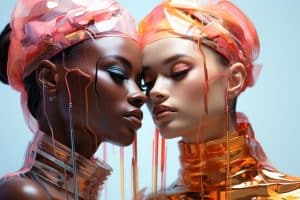
The intricate discussion surrounding The Ethics of AI-Generated Art: Copyright, Creativity, and Cultural Impact is not merely a passing technological fad; it represents a fundamental shift in how we perceive and interact with artistic creation.
The challenges posed by AI in art—from the complexities of copyright and authorship to the redefinition of creativity and the profound cultural implications—demand a nuanced and proactive response from all stakeholders.
Ignoring these issues risks undermining the integrity of artistic expression and exacerbating existing inequalities.
The path forward is clear: it requires continuous, open, and interdisciplinary dialogue.
Artists, technologists, legal experts, policymakers, and the public must engage in a collaborative effort to shape the ethical guidelines and legal frameworks that will govern AI art.
This dialogue should be driven by a commitment to fostering innovation while simultaneously protecting artists’ rights, promoting diverse and equitable representation, and preserving the unique value of human creativity.
As AI models continue to advance, their ability to generate art will become even more sophisticated, blurring boundaries and challenging conventions at an accelerated pace.
Therefore, our ethical frameworks must be agile, capable of adapting to unforeseen developments.
This is not about choosing between human art and AI art, but rather exploring how they can coexist, collaborate, and evolve together to enrich our cultural landscape.
The future of art, shaped by AI, is not predetermined; it is a canvas upon which we, through our collective ethical choices, will paint.
| Key Aspect | Brief Description |
|---|---|
| ⚖️ Copyright Conundrum | Traditional copyright law struggles with AI authorship and training data use. |
| 🎨 Creativity Redefined | AI challenges human monopoly on artistry, redefining skills and artistic value. |
| 🌍 Cultural Impact | Concerns arise over authenticity, cultural appropriation, and algorithmic biases. |
| 🤝 Human Oversight | Crucial for guiding AI, curating outputs, and ensuring ethical development. |
Frequently Asked Questions About AI Art Ethics
Generally, copyright laws require a human author. Most jurisdictions, including the U.S. Copyright Office, will not grant copyright for works created solely by AI without significant human creative input. The debate continues on whether prompt engineering or curation qualifies as sufficient human contribution.
AI art presents both opportunities and challenges. It can serve as a powerful tool for human artists, accelerating processes and generating new ideas. However, there are concerns about the potential devaluation of human art, increased competition, and challenges in distinguishing human from AI creations.
Key ethical concerns include copyright ownership, the definition of creativity, potential for cultural appropriation, and algorithmic bias. Issues also arise from the use of copyrighted material in AI training datasets and the authenticity of AI-generated works.
Many ethicists and artists advocate for clear disclosure of AI-generated art. Transparency helps maintain authenticity, prevents misrepresentation, and allows consumers to understand the origin and creative process behind a piece. This is becoming a growing expectation in the art world.
Mitigating biases in AI art requires careful curation and diversification of training datasets to ensure broad and balanced representation. Developers must also design algorithms that actively identify and reduce inherent biases. Ongoing auditing and community feedback are essential for continuous improvement and fairer outputs.
Conclusion: The Evolving Canvas
The conversation around AI Art Ethics is far more than a technical debate, it is a cultural and legal crossroads that will shape the way we understand creativity in the 21st century.
As artificial intelligence becomes more advanced, it forces us to reexamine who holds authorship, how originality is defined, and what role human artists play in a world where machines can generate compelling works at scale.
Studies from the Center for Media Engagement emphasize that AI-generated art challenges long-standing ideas of ownership and authenticity, calling for new frameworks that balance innovation with fairness.
At the same time, analysis published on Byte Me highlights the impact on creative professionals, who now face both opportunities for collaboration and risks of devaluation in their industries.
The path forward requires collaboration among artists, technologists, and policymakers, ensuring that AI Art serves as a tool for empowerment rather than exploitation.
Clear regulations, transparent labeling, and diverse training datasets are essential to prevent misuse while promoting inclusivity.
Just as photography once redefined art without erasing it, AI Art may expand creative horizons while reinforcing the unique cultural and emotional contributions only humans can bring.
Ultimately, the future of AI-driven creativity is not predetermined, it is a shared project. By shaping ethical and legal standards now, society can ensure that this new artistic frontier enriches our cultural landscape rather than diminishes it.
Liked the article?
